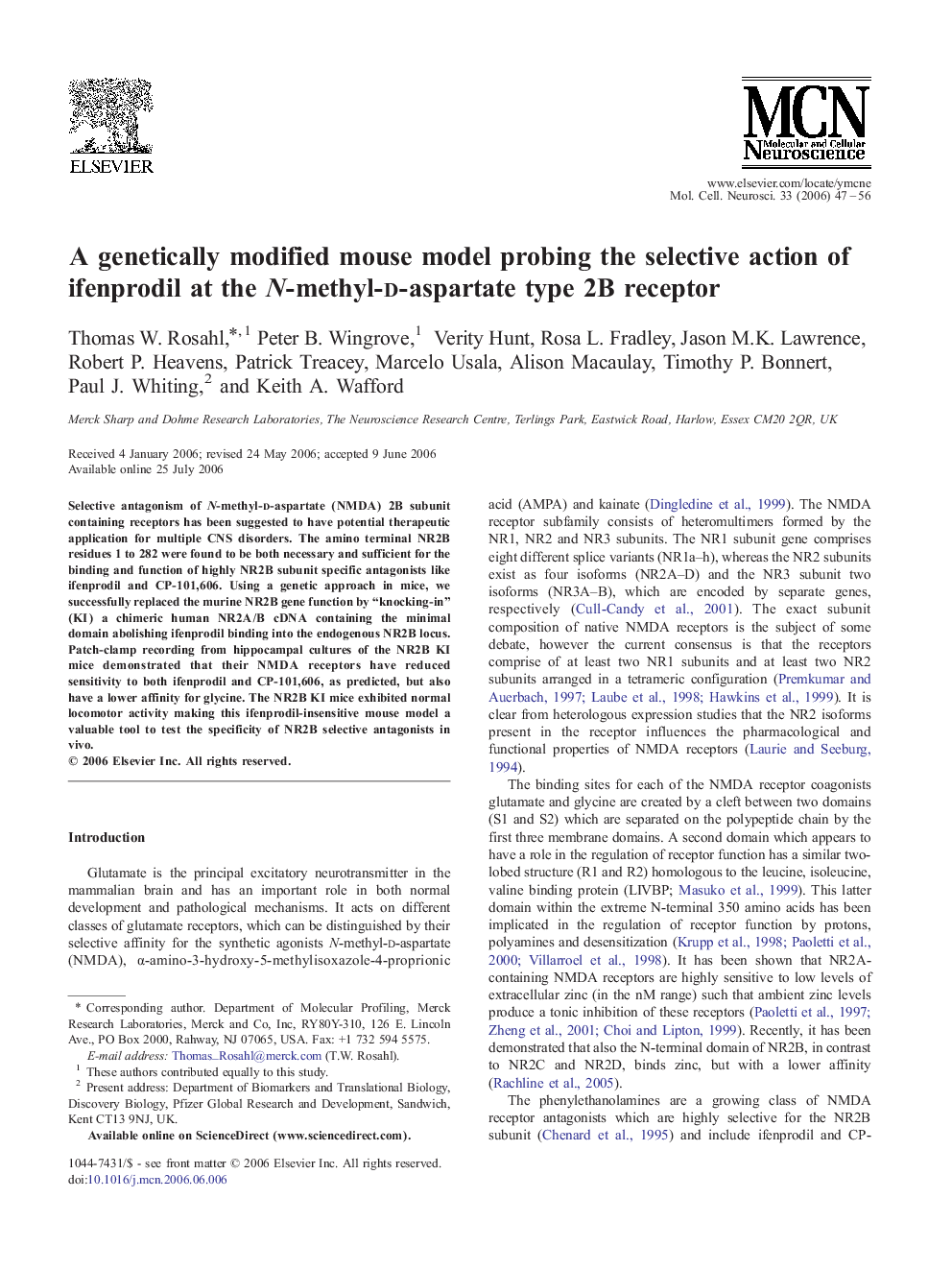| Article ID | Journal | Published Year | Pages | File Type |
|---|---|---|---|---|
| 10956757 | Molecular and Cellular Neuroscience | 2006 | 10 Pages |
Abstract
Selective antagonism of N-methyl-d-aspartate (NMDA) 2B subunit containing receptors has been suggested to have potential therapeutic application for multiple CNS disorders. The amino terminal NR2B residues 1 to 282 were found to be both necessary and sufficient for the binding and function of highly NR2B subunit specific antagonists like ifenprodil and CP-101,606. Using a genetic approach in mice, we successfully replaced the murine NR2B gene function by “knocking-in” (KI) a chimeric human NR2A/B cDNA containing the minimal domain abolishing ifenprodil binding into the endogenous NR2B locus. Patch-clamp recording from hippocampal cultures of the NR2B KI mice demonstrated that their NMDA receptors have reduced sensitivity to both ifenprodil and CP-101,606, as predicted, but also have a lower affinity for glycine. The NR2B KI mice exhibited normal locomotor activity making this ifenprodil-insensitive mouse model a valuable tool to test the specificity of NR2B selective antagonists in vivo.
Related Topics
Life Sciences
Biochemistry, Genetics and Molecular Biology
Cell Biology
Authors
Thomas W. Rosahl, Peter B. Wingrove, Verity Hunt, Rosa L. Fradley, Jason M.K. Lawrence, Robert P. Heavens, Patrick Treacey, Marcelo Usala, Alison Macaulay, Timothy P. Bonnert, Paul J. Whiting, Keith A. Wafford,
